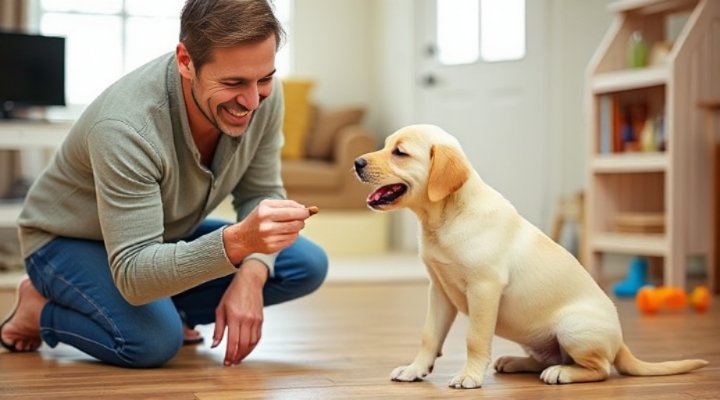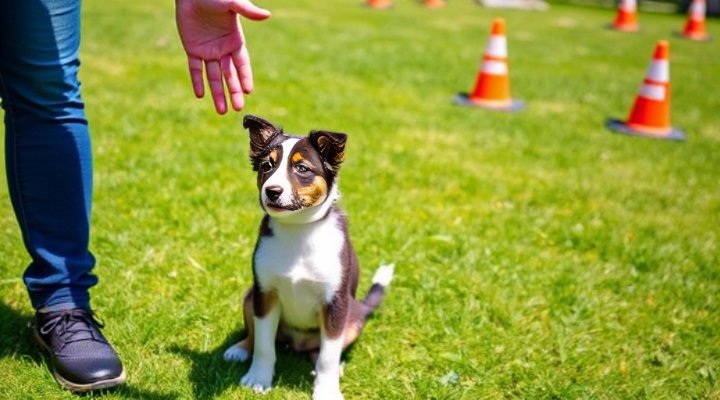Training your puppy at home is not only convenient but also strengthens the bond between you and your pet. With the right techniques and consistency, you can teach your puppy essential commands and good behavior. Here’s a step-by-step guide to help you get started.
Getting Started with Puppy Training
Before diving into training, it’s important to set up a conducive environment. Choose a quiet space in your home where your puppy can focus without distractions. Gather some treats, a clicker (if you’re using one), and a few toys. Remember, patience is key when training your puppy at home.

Basic Commands to Teach Your Puppy
Start with simple commands like ‘sit,’ ‘stay,’ and ‘come.’ These foundational commands are crucial for your puppy’s safety and well-being. Use positive reinforcement, such as treats and praise, to encourage good behavior. For example, when your puppy sits on command, immediately reward it with a treat and verbal praise like ‘Good job!’

Positive Reinforcement Techniques
Positive reinforcement is one of the most effective methods for training your puppy at home. This technique involves rewarding desired behaviors to encourage repetition. Avoid punishment, as it can lead to fear and anxiety. Instead, focus on rewarding your puppy for good behavior. For more tips on positive reinforcement, check out our guide on Positive Reinforcement Dog Training.
Crate Training Your Puppy
Crate training can be a valuable tool for housebreaking and providing your puppy with a safe space. Introduce the crate gradually, making it a positive experience with treats and comfort items. Never use the crate as punishment. For a detailed guide, visit our article on Puppy Crate Training Tips.

Leash Training at Home
Leash training is essential for safe walks and outdoor adventures. Start indoors where there are fewer distractions. Let your puppy get used to wearing a collar and leash before venturing outside. Practice short sessions and reward your puppy for walking calmly beside you.

Common Challenges and Solutions
Training your puppy at home can come with challenges, such as distractions or stubborn behavior. Consistency and patience are key. If your puppy struggles with a particular command, break it down into smaller steps and practice more frequently. For advanced techniques, explore our Best Dog Training Methods guide.
Advanced Training Tips
Once your puppy masters basic commands, you can move on to more advanced tricks and behaviors. Teach your puppy to ‘shake,’ ‘roll over,’ or even ring a bell to go outside. For creative ideas, check out our article on Dog Doorbell Training.

Conclusion
Training your puppy at home is a rewarding journey that strengthens your bond and ensures a well-behaved pet. With patience, consistency, and positive reinforcement, you can achieve great results. For more resources, visit the American Kennel Club or the American Veterinary Medical Association.
Related Keywords: puppy training, home training, dog training, basic commands, positive reinforcement, crate training, leash training.
